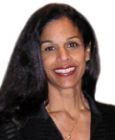
Marriage
High-Achieving Black Women and Marriage: Not Choosing or Not Chosen?
Black SWANS (Stong Women Achievers, No Spouse)
Posted June 14, 2010
She was a 40 year old black woman with a Ph.D., ready to find a mate in a city that is only 5% black. One day a tall good-looking black man about her age approached her in the gym. He hadn't finished college but was smart, funny and interesting and she was happy to go out with him. At the end of what she thought was a fun, easygoing dinner he said he was really attracted to her and tried to get her to stay at his place. She refused, telling him it was too fast for her but that she would love to see him again. His response? "Just because you have a Ph.D. you think you're too good for me?" She was so taken aback by his comment she's never forgotten it. That woman was me.
"We have a saying called the 'black girl curse.' A lot of our white friends are married by 25, happily married with kids by 27, and we're like, 'What's the deal with the BGs?' -- and that's black girls."
Popular culture and media such as the ABC Nightline story (from which this quote was taken) continue to feature attractive, successful black women opining about being dissed and dismissed by black men. For years I facilitated black student, faculty and staff support groups on predominantly white campuses and heard similar complaints (especially about high-achieving black men dating and marrying interracially).
What's really going on with high-achieving black women and marriage?
BlACK SWANS
In her wonderful book, Why Smart Men Marry Smart Women, Christine Whelan coined the term SWANS® (Strong Women Achievers, No Spouse) and found that "high-achieving women marry at the same rates as all other women; they just do it a little later". Is this true for black SWANS, given all the perceptions to the contrary?

We have been hearing for several years that about 70% of black women are unmarried (including never-married, divorced and widowed). According to the 2009 Current Population Survey (CPS) of the U.S. Census1 nearly twice the percentage of black women (44.5%) as white women (24%) and Asian women (23%) have never been married. They also significantly outnumber never-married Latinas2 (32%).
The average age of first marriage in the U.S. today is about 26 for women and 28 for men, but closer to 30 for the highest educated, so to get a better look at black SWANS I will zoom in on 25-34 year-olds.
INCOME MATTERS


These charts using data from the 2009 CPS show that folks with the highest personal annual incomes are most likely to be married at 25-29 - with two glaring exceptions. In the rarified air of $100,000+ income, 93% of black women and virtually 100% of Latinas are single. By 30-34 things appear to even up. Only 18% of the white and Asian women and 19% of the highest-earning black women have never been married at this age. Christine Whelan's findings about getting married later seem to hold true for black SWANS.
But wait. When we compare currently divorced 30-34 year-olds in this income bracket, there's another glaring difference. A far greater percentage of black women have already been divorced than anyone else in this age group! Could it be that the highest-earning black women do get married at similar rates as other women by their 30s, but also get divorced more quickly? If so, why? Or are these stats misleading due to smaller sample size than the full census that's taken every 10 years? This is food for thought that merits further qualitative and quantitative research.

Gender Gaps in Income by Race: 25-29 Year-Olds
Since there are fewer black men than women in the non-institutionalized population we need to compare total numbers of men and women instead of percentages when comparing incomes to get a clearer picture of the never-married mate pool. As the charts below show, 25-29 year-old Latina, white and Asian women earning anywhere between $25,000 and $80,000 have lots of males to choose from in their own and higher income brackets.




The story is different for black women. At $25,000 - $39,999 black women outnumber men, and although they do have more male counterparts in the middle-income ranges it's by a much smaller margin than other ethnicities. And at $100,000 and over, black women are the only group who outnumber their men - and by over 1.5 times. There are 157 black women for every 100 black men while there are approximately 450 white men for every 100 white women in this income bracket! Super-successful single young sistahs looking for similar black men face fierce competition compared to white women - a serous challenge for black women who aren't willing to re-assess their "eligibility" criteria.
Gender Gaps in Income by Race: 30-34 Year-Olds

never married Asian by income


Between 30 and 34 the gap is great for black middle class women. There are almost twice as many white men earning $40,000 to $74,999 as white women, but there are 25% more black women than men in the same income range. The gender disparity switches at the highest income levels - but at those incomes there is a surge in black men (but not women) marrying interracially - which I'll talk about in an upcoming post on interracial dating and marriage.
The Higher Ed Gap is As Much About Race as Gender
Using the 2009 CPS census data on highest education level completed, the ratio of females to males with Bachelor's degrees and higher (professional, Master's and doctorates) is:
Age 25-29 Age 30-34
Black 1.67 to 1 1.77 to 1
White 1.23 to 1 1.24 to 1
Asian 1.10 to 1 1.17 to 1
Latina .96 to 1 1.56 to 1
The ratio of black females to males is far greater than any other group at 25-29 and gets even bigger at 30-34, where it flips for Latina women. At 30-34 there are 177 women for every 100 men with bachelor's degrees or higher. If we just count people with master's and doctoral degrees, there are 209 black women for every hundred men versus 133 white women, 101 Asian women and 173 Latinas for every hundred of those men. So once again, the fiercest competition for mates within one's own race is among black women...which is certainly not new news to those women in my groups!
Greater competition brings out some of the worst behavior in both men and women when it comes to the qualities that sustain healthy, satisfying relationships. In a pool where there are a lot more women than men, men are rewarded (in the short term) for being more selfish, insensitive and opportunistic and some women begin to lower their own standards on being treated well, simply to avoid being alone.
Should We Be Less Picky?
A majority of women of all races still seek (and are most likely to meet) partners who are racially and ethnically similar to them, have equal (or greater) education and income, and are the same age or a few years older. The pros and cons of limiting the mate selection pool to those who match up on these demographics create personal choices that come with trade-offs.
I am all for loosening rigid notions about compatibility that are more focused on demographics than values. See my Marry Him? post for my take on this. But people's demographics do influence who they are, how they behave and what they value. So rather than excluding whole groups of people out of hand, taking the time to see how someone's race, ethnicity, education, age and income affect their beliefs, attitudes, character and actions gives us a much better shot at a compatible match - with a broader pool of possibilities!
Another fine option is enjoying the fruits of a full and vibrant life while putting marriage on the back burner or off the stove altogether. More and more men and women of all races and ethnicities are savvy, smart, successful singles!
Epilogue
I followed my own net-widening advice and was open to finding love with a compatible person regardless of race. I ended up marrying a kind, creative, wonderful man with a Ph.D. who has very similar values... and happens to be white.
© 2010 Linda R. Young, Ph.D. All rights reserved
Council on Contemporary Families, Board of Directors member
http://www.contemporaryfamilies.org/
Footnotes
1. The CPS of the U.S. Bureau of the Census samples about 50,000 households every month and "is scientifically selected to represent the civilian non-institutionalized population...The sample provides estimates for the nation as a whole". It's not as accurate as the full census that is taken every 10 years, especially where the smallest demographics are concerned (such as the very wealthiest black and Hispanic women), but when trends are changing it gives us a good indicator of where things are going.
People now have the opportunity to check more than one race in the census and I haven't counted the people who check more than one race. Otherwise they could be counted twice, which would result in comparing them to themselves. (For example, bi-racial people may be counted as "white alone or in combination with one or more other races" and "black alone or in combination with one or more other races". Between 2000 and 2008 there's been a 32% increase in the mixed-race population (from 3.9 million to 5.2 million).
http://www.census.gov/population/www/socdemo/hh-fam/cps2009.html 2009 marriage rates
http://www.census.gov/population/www/socdemo/education/cps2009.html 2009 educational attainment
2. Excerpts of Dr Whelan's books can be found at http://christinewhelan.com/books/excerpt1 She also has a great blog on her website.
3. Where I use the term "Latinas" I am referring to Hispanics of any race as the CPS does.



